Phlox variety Twinkling star for summer residents
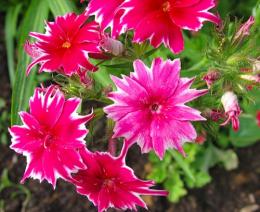
Content
How can the twinkling star phlox variety be interesting? In general, this flower is now represented by more than 400 varieties. Growing the plant is quite simple.
How phlox is grown in the country
Phlox varieties the differences are very simple. If we talk about the Twinkling Star, then it is very easy to recognize it. These star-shaped flowers also have a characteristic, fragrant aroma. There is no fundamental difference in cultivation. But the petals of the plant seem to be pointed. It `s very unusual. They are not round, like the classic varieties. These bushes are also very low. They are unlikely to grow above 35 cm in height. It is valued for its dense, bright inflorescences; their diameter can reach 10 cm.
The agricultural technology of the Twinkling Star is characteristic. The plant has a stage of greatest decorativeness. It is achieved by providing moderately moist, fertile soil in a sunny place.
When seedlings are grown, sowing is carried out in the month of March, using seedling boxes. The seed placement depth parameter will be 0.5 cm. Maintaining a soil temperature of +18 °C, seedlings are expected to emerge on days 7-14. To maintain seedlings, moderate temperatures are needed. Seedlings should be planted in the ground at the end of May. It is necessary to maintain a distance of 20-25 cm. Seeds are sown in open areas in May. Before this, they are soaked for 20-30 hours. Let's take a closer look at the conditions in which phlox grows.
The main requirement is the possibility of generous watering.If there is a danger of prolonged drought, even the proximity of a pond and stream will not save the plant. Drying out the soil is contraindicated.
It is also important to choose the right soil. Phlox respond well not only to sunny places. Partial shade is also suitable for them. The best option is an area that is protected by trees and bushes. This creates excellent shading for the plants, even in hot weather. This is very important for varieties that are called brightly colored. And in winter, it is under the trees and bushes that snow settles. This makes it possible to reduce temperature fluctuations to a minimum. In winter this is very important.
- the choice should be made on an area where there is a slight slope. When snow melts or rainy seasons, this will save the plants from flooding. There are also the following recommendations on how best to plant phlox in the garden:
- if the soil on the slopes dries quickly, it is unfavorable in this case;
- It is impossible for snow to be blown onto the plantings in winter, and water to flow down during rainy periods;
- An environment of trees whose roots grow from the top is not suitable, these include lilac and birch, etc.;
- Western, eastern, southwestern and southeastern slope positions are suitable for a flower garden;
- The north side, or the shade of coniferous trees, is worse.
How to care for phloxes in the country
Phlox are able to survive in difficult conditions, but then flowering will be much more difficult. This culture is cold-resistant.
The best soil for them will be medium loamy, loose and moist, close to neutral (pH 5.5-7.0).Growth and flowering will be successful with the addition of manure, a share of leaf soil, compost and ash; they are combined with organomineral mixtures and mineral fertilizers.
Phloxes have a strong root system. The depth can reach 25-30 cm. It is good to prepare the soil in advance. For spring plantings, this is done in the fall, but for autumn plantings, at least a couple of weeks in advance so that it has the opportunity to settle well. For heavy clay soil, coarse-grained river sand is added. You also need humus, a compost mixture, lime (parameters 250-300 g/m2), a volume of low-lying peat, and mineral types of fertilizers. The soil will have to be dug up many times. Then a homogeneous soil structure will be achieved.
When planting is carried out on sandy soil, the location and size of the potential flower garden is determined in advance. Soil is dug to a depth of 45-50 cm throughout this area. Lay a layer of clay on the bottom. Layer - 15-20 cm. Fertile soil is laid on top, compacted and watered abundantly.
During planting in the fall, phosphorus-potassium fertilizers are added to the holes. For nitrogen-containing and complete complex series, spring is suitable.
Shoots appear in early spring. Seedlings need to be picked when two pairs of true leaves appear. The seedlings are moved to a prepared bed where fertile soil is scattered. A week later, add fertilizing - mullein solution (1 to 20). Maintenance in the future is quite simple. They are watered, the soil is loosened, and fertilizing is added. As the plant grows, the composition of the fertilizer does not change, but the proportions increase. Then phlox The twinkling star will bloom brightly, and their fiery outlines of inflorescences will delight with decorativeness.

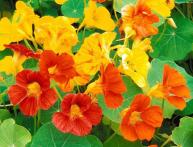
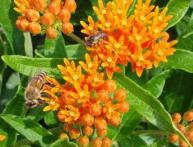
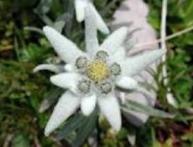
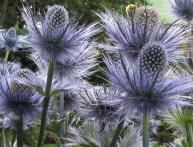
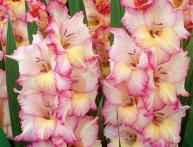

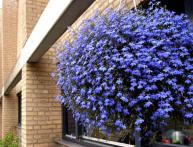
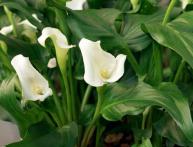
Comments
This is beauty!!! Even a beauty! Until I looked closely at the sepals, I wouldn’t even think that they were phlox. These flowers are a real miracle; if you don’t know what they are, you’ll never guess. How beautiful!
From the picture I would also never have guessed that these were phloxes. As for the aroma, as a distinctive feature of this variety, it seems to me that ordinary phloxes are also not at all deprived of it.